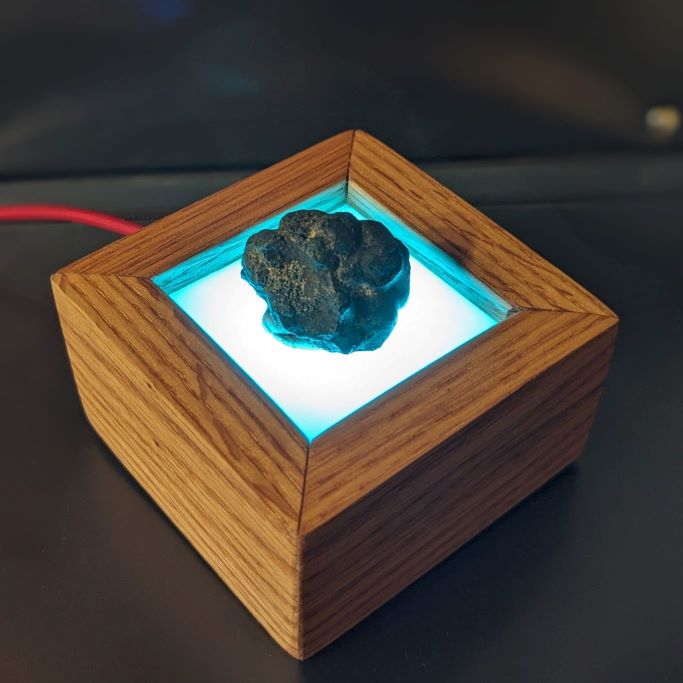The Common Heritage of Mankind.
The core principle that underlies all of the negotiations surrounding deep-sea mining beyond national borders is that these resources don’t belong to any one person, organization, or nation, but to humankind as a whole, to be exploited (or not) for the benefit of the world as a whole. With the adoption of the UNESCO Declaration on the Responsibilities of the Present Generations Towards Future Generations, that principle now includes future generations, explicitly declaring that “the present generations may use the common heritage of humankind, as defined in international law, provided that this does not entail compromising it irreversibly.”
So how do we actual mine a common heritage resource for the benefit of the humankind as a whole?
The answer is, unsurprisingly, money.
The Authority shall provide for the equitable sharing of financial and other economic benefits derived from activities in the Area through any appropriate mechanism, on a non-discriminatory basis, in accordance with article 160, paragraph 2(f)(i).
UNCLOS Part XI, Section 2, Article 140: 2
The Financial Regime is the array of policies surrounding how revenue, royalties, taxes, and tariffs collected from commercialization of the deep ocean are distributed to member states (the 169 nations who have ratified the Law of the Sea), developing nations, liability funds to cover environmental, social, and industrial impacts, and the International Seabed Authority itself. It is a tortuous tangle of proposals which reflect how nations value these resources depending on if they expect to mine, to develop industries supporting mining, protect their terrestrial industries impacted by deep-sea mining, or just collect a royalty payment.
Note: the financial regime is not the same thing as the financial model. The financial model is a tool that’s been developed to help the ISA determine how different royalty rates and payment structures would effect the bottom line and help predict how much revenue different policies would generate. The Financial Regime is those policies.
The Commonwealth provided an excellent presentation on Tuesday (warning: link triggers download of a PowerPoint), covering some of the gritty and more granular details embedded in the current vision for the financial regime. Chief among those is pinning down an effective tax rate for deep-sea mining contractors that is on par with their terrestrial counterparts. Deep-sea mining within the context of the ISA is not supposed to adversely impact terrestrial mining, the ISA is tasked with creating a level playing field between deep-sea contractors and land-based miners. There have been numerous debates on what a “fair” effective tax rate for a deep-sea mining company is over the last several years, but the short answer, for the moment, is 43%.
The final rate probably won’t be exactly 43%, but that’s what is being used for the sake of informal negotiations.
There’s a little issue with that effective tax rate. Some deep-sea mining companies have agreements with sponsoring states that have high taxes on industry. Some deep-sea mining companies have agreements with sponsoring states that have no taxes on the industry. The existing sponsorship agreements are largely confidential, and the committee working on the Financial Regime only has access to a handful of them. If the target is an effective tax rate of 43%, then the amount that the ISA taxes each mining company has to change depending on how much tax the sponsoring state levies.
Thus, the Equalization Measure. The equalization measure frees up sponsoring states to levy whatever tax they want against a mining contractor, and the ISA will pick up the slack in order to get the effective tax rate on parity with terrestrial mining. How the equalization measure will be implemented is an important agenda item for the next few ISA meetings.
Incidentally, as currently conceived, the equalization measure does not effect the ISA base royalty. The ISA is still going to get paid, regardless of the tax rate. And the ISA needs to get paid, because the ISA needs to oversee the distribution of funds in accordance with the Common Heritage Principle. It needs to create an environmental compensation fund to mediate or offset damage to the seafloor, is needs to create a compensation fund for terrestrial industries should deep-sea mining negatively impact their revenue, and the ISA needs to fund the Secretariate and, ultimately, the Enterprise.
Don’t worry, we’re going to talk about the Enterprise.
This requirement to be on parity with terrestrial mining, to not adversely impact the terrestrial mining industries of developing nations, to not privilege the source of metals which can be derived from the deep-sea, is, along with the Poison Pill, what has ultimately tempered my enthusiasm for the industry. Deep-sea mining of polymetallic nodules is, almost certainly, the least worst way to get new cobalt and nickel out of the ground. But that value proposition depends on deep-sea mining being used as a cudgel to close down terrestrial mining operations, either through policy or through competitive advantage. If the policy precludes a competitive advantage, if deep-sea mining can’t undercut terrestrial mining (and may ultimately be more expensive) it’s much harder to offer full-throated support for an industry whose impacts will add another environmental harm.
Southern Fried Science is free and ad-free. Southern Fried Science and the OpenCTD project are supported by funding from our Patreon Subscribers. If you value these resources, please consider contributing a few dollars to help keep the servers running and the coffee flowing. We have stickers.
